Aside from Los Torres, the Valle del Frances (French Valley) was the park’s other crown jewel of geological art. The valley headed north from the lake past a campsite and up along a boulder river, pushing into valley-funneled winds that had twisted the canopy of small leafed aerodynamic trees into shapes that act as a telltale wind vane. The forest floor was scattered with generations of trees past, all twisted into fantastical forms. Soon after rising steeply, the vegetation hunkered down and the views opened up.
The Paine Massif’s highest peak, Cerro Paine Grande, loomed dark and high to the west. Covered in white glaciers along its steep slopes, their precarious positions were made evident by the calving that frequently happened. During our short time there, we saw three glacier induced avalanches and heard about ten others, all cascading and building into a roar of sound and wind blown snow amid bouncing ice chunks.
The stratified back side of Los Cuernos hovered in craggy formation to the east, and ahead the shark-fin-shaped Aleta del Tiburon pointed to the heavens. New towers and glaciers became visible, and it seemed that Tolkien orks would come charging out of their lairs nearby. The valley was a place to sit and watch, to walk and see the changing perspectives, and to above all look around in every direction.
After backtracking down Valle del Frances, we headed southwest along the lower slopes and skirted Lago Skottsberg. We could see wind blasts in the distance bend and rattle trees in a wave moving across the landscape, bouncing off the lake surface below and lifting the tops of instantly created white caps. Water sheets would twist and circle up back into the air, catching the light like Andean ghosts. Then the rush would roll up the hillside and roar past, catching our backpacks and unbalancing our footing, followed by the calm of a steady breeze while the next air avalanche was bending trees in the distance again.
Refugio Paine Grande – a.k.a. Lodge Paine Grande – was an unusual oasis when it first came into sight. Situated on the shores of Lago Pehoe, it looked like a fancy hotel. Complete with cafeteria, store, generator-provided electricity, Internet access by satellite, and a tiled lobby with overhead lights and formal front desk, it was a strange contrast to all of the park’s other refugios. This one was accessible by a ferry boat, which on the other end was met by car or bus. So the place buzzes with both dirty backpackers and groomed high maintenance tourists who are getting out in the wilds of Chile about as far as they are willing to push a lack of conveniences. It’s a pleasant enough and well run place, though sterile and completely lacking in the cramped camaraderie of all the other refugios.
The next day’s hike north to Refugio Grey, above the drifting icebergs of Lago Grey, was filled with a different mix of people compared to the rest of our hiking. Within a few hours of the “hotel”, we saw whiny tourists complaining about the Patagonia weather, wearing jeans and carrying only a pocket camera for the views they weren’t even noticing. But since Glaciar Grey at the other end of the lake was such a prime destination, we still eventually ended up again with a new mix of appreciative international backpackers at the refugio.
Refugio Grey had the most interesting location of all the refugios, where the Grey Glacier cracked and iceberged into Grey Lake, but it was also the most run down and simple of them all. Small coed bathrooms contained moldy half-constructed showers, and the layout was very dark and cramped. But it was all location location location.
I pre-arranged for guides to take me up onto Glaciar Grey itself the next morning. They outfitted me, a woman from Ireland, and a South American man; we were given crampons, climbing harness, and ice axes. Then we were off across the gray blue waters of Lago Grey in a small zodiac to the western base of Glaciar Grey.
Walking along the glacier’s crevasses, crawling into ice caves, and learning firsthand about the mechanics of a glacier, it was definitely a well recommended highlight. We learned basic ice climbing techniques, culminating in a top-roped ascent of a 60 foot ice wall. Along the way, the glacier showed how it was truly a river of ice. The center current moved faster than the sides along the “shore”, “waves” moved at different depths, and “eddies” formed behind land formations. All of this occurred over time periods far longer than any liquid river, but many of the same principles applied nonetheless. Watching the Irish woman overcome her fears of the ice wall, and seeing the South American’s smiles looking into the deepest blue pressure depths of the glacier, really accentuated how fun it all was.
Late that afternoon we boarded the Grey II ferry boat which arrived offshore at Refugio Grey, and we hopped into a private (and expensive) “transfer” which taxied us along the gravel roads to Hotel Tyndall at the south edge of the park.
Hotel Tyndall exemplified how overpriced and underserviced the park’s few hotels were. For US $160 a night, we got friendly service and access to a very good restaurant (at additional cost), but also received a shoddily constructed building with a barely lukewarm shower, non-functional room heaters, about two feet of walking space on 3 sides of the bed, and the unheated hotel/restaurant/common areas were so cold that the front desk staff wore parkas. There was apparently one hotel in the park that charges around US $500-1000 per night, although the included services were apparently very high quality even if the building and rooms were not. It was all partly supply and demand, partly price fixing, and partly the cost of having remote construction and staff, all rolled into one exorbitant price. Karen and I kept strategizing about ways to make a serious profitable lodging business there; opportunity in remotest Chile!
The park’s cheapest road accessible accommodation was Posada Rio Serrano at US $92 for two people in a bunk bed room with no room heater and a shared bathroom. We got out of Hotel Tyndall and transferred over to Posada Rio Serrano since it couldn’t have been much worse than Tyndall and it cost less. The Posada had hot showers and a wood stove in the hall plus the nearly vacant restaurant was cheaper, so it was a good move. Although the generator ran outside our window, it was easily solvable by ear plugs. We washed our clothes in the sink, hanging them to dry on a clothes line shared with two freshly skinned pigs. It also positioned us more centrally in the park, and we easily caught one of the few scheduled busses that passed through a few times each day.
Salto Grande, a major waterfall, roars its watershed from Lago Nordenskjold to Lago Pehoe below. The volume of water melting off all the glaciers and snowfields we had hiked past over the preceding week was very evident: the water not only moved fast, but it was also deep at the drop’s edge. From there, a one hour hike took us to the south shore of Lago Nordenskjold for a distant perspective on our recent trek which had been along the north shore. Los Cuernos and the French Valley shone for us, and even Refugio Cuernos was visible among the dark green trees over toward Almirante Nieto. The walk was surrounded by yellow-green pillow shaped bushes in a fluffy quilt pattern across the hillsides, ending at the lookout with a wind that you could lean on.
The next morning we were met by our kayak guides Rodrigo and Tadeo, complete with a gear-filled van. Three MBA students from Dartmouth’s Tuck School of Business also showed up as part of their Argentina-Chile-Brazil trip, and we all headed to the road’s end onto the Rio Serrano. After introductions, gearing up, paring down, and getting a safety talk, we disembarked and were immediately moved along by the strong current downstream.
Kayaking the Rio Serrano added another layer to understanding and experiencing the area of Patagonia between Torres del Paine and Bernardo O’Higgins parks. Although the river moved away from the picturesque mountainscapes of Torres del Paine, it brought the valley foothills, forests, and estancias (ranches) into better focus. Tree lined river banks flowed by, with wild parakeets, Chilean finches, and gliding condors above. Waterfalls flowed down hillsides to the river’s forested pastures, where startled beef steer watched us cautiously. Finger glaciers of the massive Patagonian Ice Field were frozen in their slow moving cascade down mountainsides. The river’s only obstacles were wind-whipped waves, bank-sweeping currents, submerged trees, and one portage, but it was mostly easy going.
The weather was classic Patagonia: highly variable and windy. Breezes would start light and then build, throwing water drops from both our paddles sideways into my face as each blade was raised for the next stroke. Each bend in the river brought headwinds, or calm, or wind to our backs. When behind us, we could lift our paddles and use our blades as sails, feeling the pull down our arms propelling us very rapidly down river. On the third day, we experienced winds and waves that Rodrigo had only guided people through a few times in his nine years as a full time guide. Upon reaching the open sound and rounding a promontory of land, swells pushed the nose of our double kayak airborne before slapping back down and washing over our burrowed bow deck and spray skirts. It was important to be constantly paddling: half to push into the wind and half for stability. After returning on that stretch from the Balmaceda Glacier, the following seas constantly picked up our boat and turned it perpendicular to our route, necessitating nonstop steering corrections. Everyone made it through, though another kayak group got turned back and could not continue on the route.
Campsites were well selected, one at a calm river cove on top of a million cow pies, and the other at the base of the lagoon formed by the Serrano Glacier. Lots to eat, too. The guides would start welcome warming campfires while we ate appetizers of cheese and crackers, followed by either a rice seafood dish with strawberries and cream dessert, or a creamy Italian pasta dish with sweetened fruits for dessert. Red wine flowed, and the pisco sour gave us the extra kick of a buzz.
The MBA students started off a bit discombobulated in their planning and prep, but quickly got everything together and turned out to be great tripmates. We shared stories, played cards, learned about each other’s lives. The group spunkiness made it all the more fun.
Even better, our lead guide Rodrigo was a terrific resource, competent guide, and nice guy. After nine years of guiding kayak and trekking groups through the area, he still took his personal vacations there too. His love for it all came out in his enthusiasm and helpfulness, while he was also a smart trip leader who balanced safety with client interests and ensured everyone was given attention and having fun. Apparently word had spread about him over time, and he also consulted with estancias during the off season to educate them and plan for implementing tourism opportunities. He said his biggest challenge was convincing ranch owners that visitors would actually pay to do things which required them to work, sweat, and get dirty; that was outside their experience and definition of a real vacation.
The trip was wrapped with a several hour ferry ride from our camp at Serrano Glacier all the way back to the docks at Puerto Natales via the Seno Ultima Esperanza. Along the way we stopped at an estancia for barbeque lunch, and were visited out on the water by dolphins leaping in our bow wave. As we pulled up to Puerto Natales, the huge Navimag ferry “Magallenes” sat waiting for us.
For four days and four nights we traveled by ferry north through Chile’s Pacific coast of islands, fjords, and open ocean waterways. It was an interesting alternative to the airline and bus options, plus there actually were no roads connecting the southern Patagonia area of the country with the mid-country ferry destination of Puerto Montt. It was the country’s semi-organized way to see the intricate channels and unpopulated lands which comprise so much of the southern third of Chile.
After completing some quick errands in Puerto Natales, we funneled like livestock onto the industrial looking ferry with newly met people from Switzerland and Holland. Our bunks were open dorm style, with no doors or privacy, plus there was a small locker carefully arranged by us for four days of locker pile access. By chance, we were on the bunks above the same Dutch couple we got to know while boarding. Showers and bathroom facilities were shared, although I accidentally took my first shower in a private single bathroom reserved for one of the few private cabins. Oops, but it was nice anyhow.
The ferry was laid out on multiple levels, all with different purposes. At the two lowest levels, one of which was open air, were parked all the trucks, containers, and general cargo. Depending on wind direction, the smell of cattle could be pungent from there. The ferry was originally started in 1978 when Argentina refused to allow Chilean freight trucks through their country to get around to the remote southern Patagonia regions of Chile that we were departing from. Over the years, passengers gradually became more interested in the idea of traveling through Chile’s remote fjords and island chains even if it was on a freight ferry, so the third level was gradually converted over to cabins, dorm bunks, and bathrooms. In addition, a dining area was created on the fourth level up, and a pub/lounge on the fifth. Pilothouse, crew quarters, and machinery rooms were all interspersed, as well as sparse accommodations for the truck drivers.
It was not fancy by any means, but the food was good and they made decent attempts at entertainment for the passengers. An occasional video was played, a bilingual guide gave a daily informative presentation (once in Spanish and then again in English), and they even had a dance party plus a night of bingo in the pub. “Happy Sour” (happy hour for the tasty pisco sour alcohol concoction) was always announced and handled by Mr. Chicken, the bartender.
The voyage departed from Puerto Natales very early in the morning while the passengers slept and began winding its way north through a watery labyrinth of islands and passes. First constricting down to the tight Paso White (White Pass), and then opening up among numerous islands, the view was constantly shifting near and far. In the distance, snow-capped volcanoes appeared above the uninhabited green brown foreshore. Gray hanging foggy clouds started just a few hundred feet up the steep barren rocky shores, creating a ceiling over our boat for the first day. But then the skies opened and the winter wear was swapped for sunscreen lotion and T-shirts for the remainder of the trip. Along the way, we were visited by whales and dancing porpoises doing sideways launches into the air.
Our only land excursion was to the remote waterside community of Puerto Eden. Indigenous men on small leaky brightly painted boats came out to take us ashore, where we could explore one of the few remaining outposts of a fast dwindling native group. The entire town was circumnavigated on wooden planks, touching upon all of the brightly colored but peeling corrugated metal shacks. It was a place completely centered around the water: every home was at the shore, and everyone owned a wooden motor boat for fishing. There was not a single car or ATV; no roads and nowhere to go.
As with trekking in the Torres del Paine, much of the fun was meeting people from around the world. I literally talked all day with strangers who became friends. The close quarters, small number of people, and shared travel bonds started some great conversations. We swapped kayak stories with Laurel the river guide and writer from Vancouver Island, plus learned about trapping animals and flying float planes from her husband Brad. John was a wealth of information on personal timber harvesting and off-the-grid living in Canada. There was the German couple touring Chile and Argentina; they worked at BMW so we compared both car and trekking notes. Adrian taught us about cheese making in Australia, and I debated with Welsh Sam about the philosophical implications of different economic models plus how ideologically different teaching methods can be combined. And so many more conversations on deck, at a meal, or in the pub.
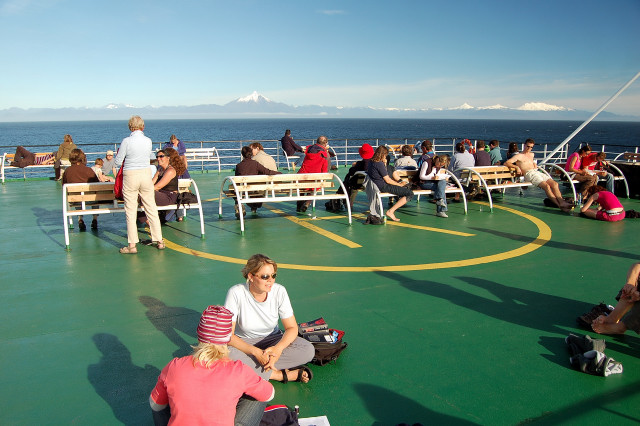
Passengers enjoying a sunny day on the Pacific Ocean from the top deck, with the Andes mountains and volcanoes as a backdrop
Continue on the journey

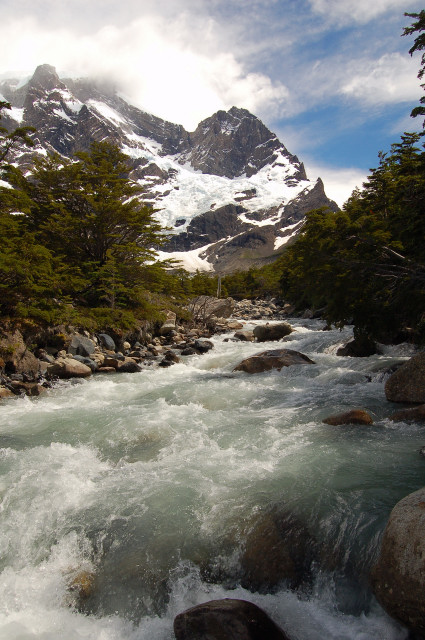

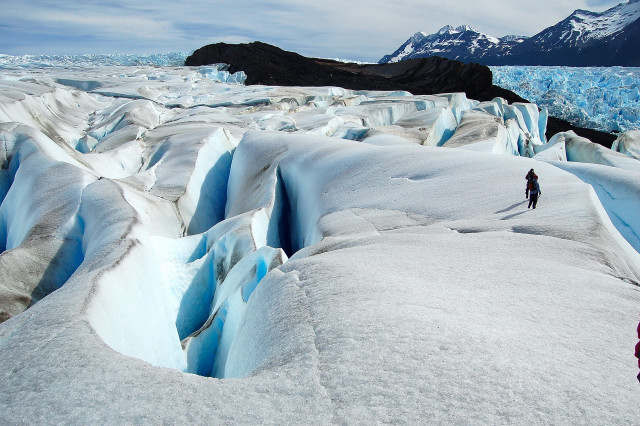
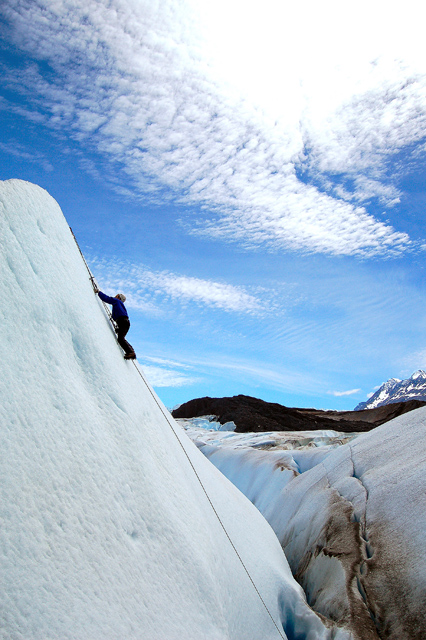
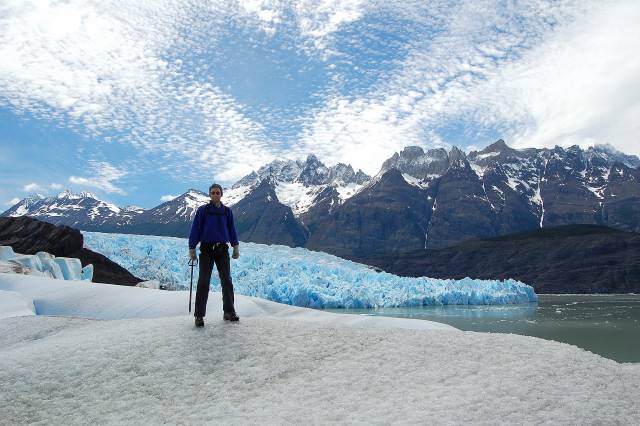

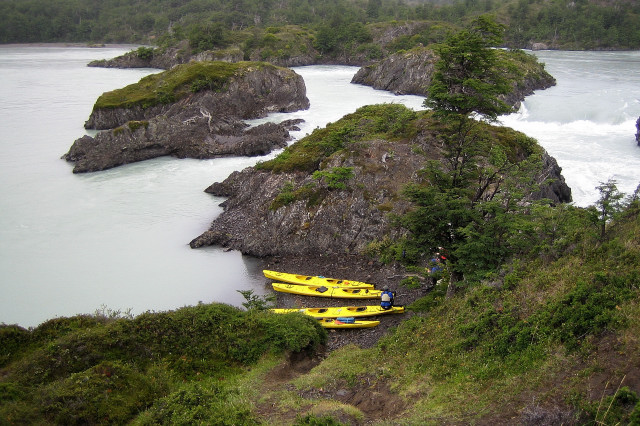
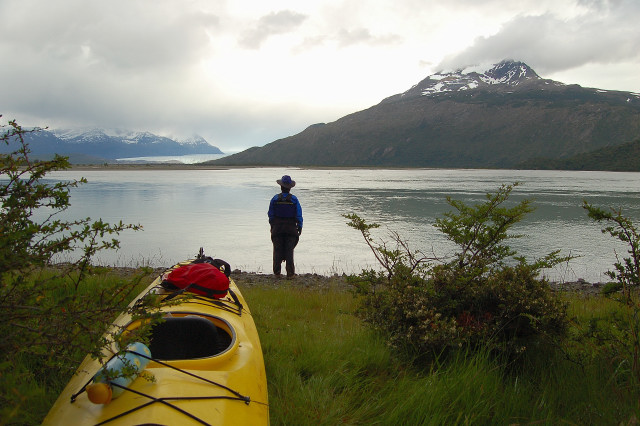
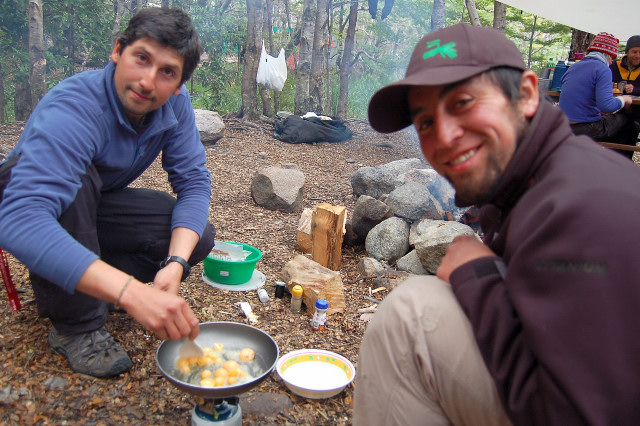
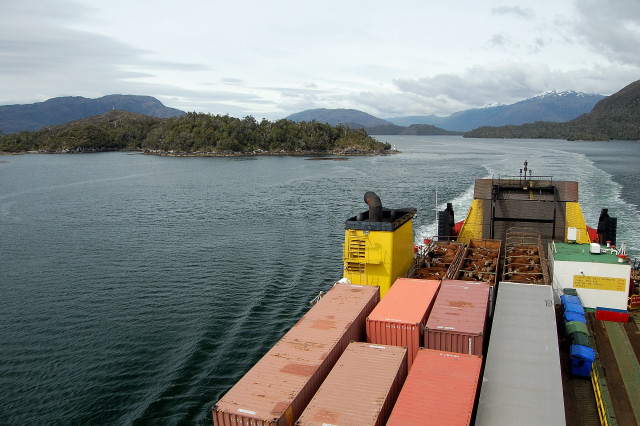
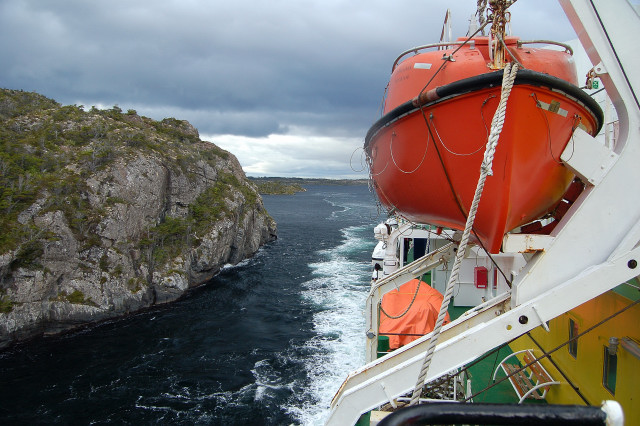
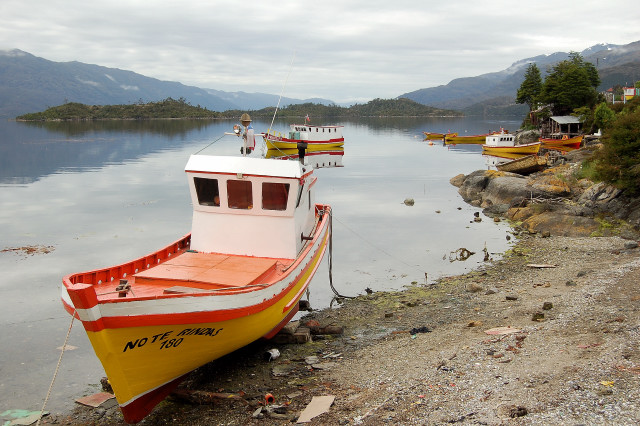
Leave A Comment